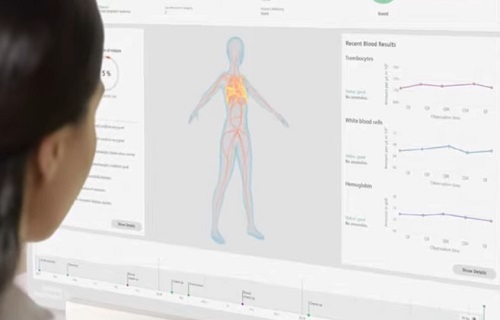What is Hypokalemic Periodic Paralysis?
Hypokalemic Periodic Paralysis (HypoPP) is a rare genetic condition that lead to temporary episodes of muscle weakness or paralysis. These episodes are triggered by a drop in potassium levels in the blood (hypokalemia).
Statistics Hypokalemic Periodic Paralysis
Prevalence
- Hypokalemic Periodic Paralysis is estimated to affect about 1 in 100,000 people making it the most common form of periodic paralysis.
Genetic Mutations
- Around 70% of Hypokalemic Periodic Paralysis cases are linked to mutations in the CACNA1S gene, which encodes a calcium channel in skeletal muscle cells.
- About 10% of cases are associated with mutations in the SCN4A gene, responsible for encoding a sodium channel in muscle cells. Orpha
- In some studies, genetic variants in the SCN4A, KCNJ2, and CACNA1S genes accounted for 92.5% of patients with a confirmed genetic diagnosis of primary periodic paralysis.
Inheritance Pattern
- Hypokalemic Periodic Paralysis is typically inherited in an autosomal dominant manner, meaning a single copy of the mutated gene can lead to the disorder.
Gender Distribution
- While Hypokalemic Periodic Paralysis can affect people of any gender, some studies suggest a higher prevalence in males compared to females.
Age
- Symptoms of Hypokalemic Periodic Paralysis often begin in the first or second decade of life, with many people experiencing their first episode during adolescence.
Frequency of Attacks
- Frequency of paralytic episodes varies among people, ranging from occasional attacks to multiple episodes per week.
Duration of Episodes
- Episodes of muscle weakness can last from a few hours to several days, resolving with normalization of potassium levels.
Penetrance
- There is evidence of incomplete penetrance in Hypokalemic Periodic Paralysis, meaning not all people with a pathogenic mutation will exhibit symptoms.
What Are Signs And Symptoms Of Hypokalemic Periodic Paralysis?
1. Muscle Weakness or Paralysis
- Main Symptom: Sudden and temporary muscle weakness or paralysis that can affect various muscle groups, particularly in the arms, legs and face.
- Location: Legs are most commonly affected, often cause to difficulty walking or standing.
- Pattern: Weakness usually occurs in episodes, often continue a few hours to several days.
2. Triggers of Episodes
- Dietary triggers: High-carb meals or sugar, which can cause to shifts in potassium levels.
- Exercise: Physical activity, followed by rest, often brings on an episode.
- Emotional stress: Anxiety, stress or excitement can trigger an attack.
- Hormonal changes: Especially during menstruation.
- Cold exposure: Sudden temperature changes may also trigger episodes.
- Medications: Some medications, like diuretics, can lower potassium and provoke episodes.
3. Hypokalemia Symptoms (Low Potassium Levels)
- Fatigue: Feeling unusually tired or weak, even without physical exertion.
- Muscle cramps or spasms: In addition to weakness, some may experience cramps or twitching.
- Irregular heartbeat (arrhythmia): Abnormal heart rhythms can occur due to low potassium levels, although this is less common.
- Breathing difficulties: In severe cases, muscles involved in breathing can be affected.
4. Normal Muscle Function Between Episodes
- Between episodes of paralysis, people often have normal muscle strength and function.
- But some people may develop permanent muscle weakness (myopathy) if episodes are frequent or left untreated.
5. Age
- Symptoms begin in adolescence or early adulthood (ages 10–30).
- Early recognition is important to manage and prevent future episodes.
6. Frequency and Severity of Attacks
- Frequency of episodes change. Some people experience only occasional attacks, while others may have multiple episodes per month.
- In severe cases, episodes may become more frequent and intense.



What Are The 5 Causes of Hypokalemic Periodic Paralysis?
1. Genetic Mutations
Hypokalemic Periodic Paralysis is often linked to specific mutations in genes that encode ion channels in muscle cells:
- CACNA1S Gene (70–80% of cases)
- This gene encodes a calcium channel protein involved in muscle contraction. Mutations cause to improper ion flow so triggering symptoms.
- SCN4A Gene (10% of cases):
- This gene encodes a sodium channel protein. Mutations can lead to excessive sodium influx, cause to potassium shifts and muscle weakness.
- Other Genes: Rare mutations in KCNJ2 and other genes may also play a role in Hypokalemic Periodic Paralysis or related conditions.
2. Potassium Imbalance
Hypokalemic Periodic Paralysis episodes occur when potassium levels in the blood drop below normal (hypokalemia). This disrupts the electrical signals in muscles, lead to weakness or paralysis.
3. Triggers for Episodes
Some factors can lead to potassium levels to drop, cause to an attack:
- Dietary Triggers: High-carb meals or sugary foods increase insulin, which drives potassium into cells.
- Exercise and Rest: Vigorous exercise followed by rest can shift potassium into cells.
- Stress or Hormonal Changes: Emotional stress or fluctuations in hormones (e.g., during menstruation) can influence potassium levels.
- Cold Temperatures: Exposure to cold may trigger episodes in some people.
- Certain Medications: Diuretics, beta-agonists or steroids may lower blood potassium and trigger attacks.
4. Inheritance
- Hypokalemic Periodic Paralysis is usually inherited in an autosomal dominant pattern.
- This means a person only needs one copy of the defective gene (from either parent) to inherit the disorder.
5. Secondary Hypokalemia
In rare cases, hypokalemia from other conditions (e.g., kidney issues, hormonal imbalances or some medications) may mimic Hypokalemic Periodic Paralysis. But this is not the same as genetic Hypokalemic Periodic Paralysis.
What Are The Treatment Options Of Hypokalemic Periodic Paralysis?
1. Managing Acute Attacks
- Potassium Supplements
- Taking oral potassium (e.g., potassium chloride) can help restore blood potassium levels and resolve symptoms.
- Dosage is carefully determined for avoid excessive potassium, which may lead to complications.
- Avoid IV Potassium Unless Severe:
- Intravenous potassium is rarely needed and is reserved for severe cases or when oral supplements are not feasible.
2. Preventing Future Episodes
Lifestyle Changes
- Dietary Adjustments:
- Avoid high-carb, sugary or salty foods that may trigger episodes.
- Maintain a balanced diet with sufficient potassium-rich foods (e.g., bananas, spinach, sweet potatoes).
- Exercise Management:
- Avoid strenuous exercise that can cause to episodes, especially if followed by rest.
- Engage in moderate, regular physical activity instead.
- Stress Management:
- Practice relaxation techniques to reduce stress, which can act as a trigger.
Medications
- Carbonic Anhydrase Inhibitors (e.g., Acetazolamide):
- This medication helps prevent attacks by promoting potassium retention and altering ion balance in muscle cells.
- Potassium-Sparing Diuretics (e.g., Spironolactone or Triamterene):
- These help maintain potassium levels and reduce the risk of hypokalemia.
- Dichlorphenamide:
- Approved specifically for periodic paralysis, it helps prevent both hypokalemic and hyperkalemic episodes.
3. Long-Term Care
- Regular Blood Tests:
- Fallow potassium levels and kidney function.
- Muscle Strength Evaluation:
- Check for signs of permanent muscle weakness (myopathy) that may develop over time.
- Genetic Counseling:
- Recommended for patients and their families to understand the hereditary nature of the condition.
4. Treating Underlying Causes
- Identify and manage any underlying health conditions contributing to hypokalemia (e.g., kidney disorders, hormonal imbalances).



How To Manage Hypokalemic Periodic Paralysis?
1. Managing Acute Episodes
- Oral Potassium Supplements
- Taking potassium chloride or other potassium supplements can help raise potassium levels and resolve symptoms.
- Dosage must be carefully determined to avoid hyperkalemia (too much potassium), which may be harmful.
- Intravenous Potassium (IV)
- In severe cases when oral potassium is not sufficient, IV potassium may be required.
- IV potassium should be administered under close medical supervision because rapid infusion can cause to complications.
2. Preventing Future Episodes
Dietary Changes
- Avoid High-Carb and Sugary Foods
- High-carbohydrate meals, especially those rich in sugar, could trigger episodes. Body increases insulin production after consuming these foods, which drives potassium into the cells, lead a drop in potassium levels.
- Balanced Diet
- Consuming potassium-rich foods like bananas, spinach, sweet potatoes and oranges can help maintain stable potassium levels.
- Avoid high-salt foods, which can lead to water retention and disrupt potassium balance.
Exercise Management
- Regular but Moderate Exercise
- Fallow light, regular physical activity instead of intense workouts, as heavy exertion followed by rest may trigger episodes.
- Exercise should be fallowed to be sure it doesn’t cause to extreme potassium shifts.
- Avoid Sudden Rest After Intense Exercise
- If you’ve been very active, try to avoid sitting or lying down too quickly after exercise.
Stress Management
- Reduce Emotional Stress
- Stress can trigger episodes, so techniques like relaxation, mindfulness and yoga can help.
- Managing anxiety or emotional stress through therapy or lifestyle adjustments is also beneficial.
3. Medications for Long-Term Management
Carbonic Anhydrase Inhibitors
- Acetazolamide is often prescribed. This drug helps to reduce the frequency of attacks by making potassium retention easier in the body.
Potassium-Sparing Diuretics
- Spironolactone or Triamterene are diuretics that help the body retain potassium, preventing its loss and reducing the chances of hypokalemia.
Dichlorphenamide
- A medication specifically approved for periodic paralysis. It helps reduce both hypokalemic and hyperkalemic episodes.
We wish healthy life to you.

